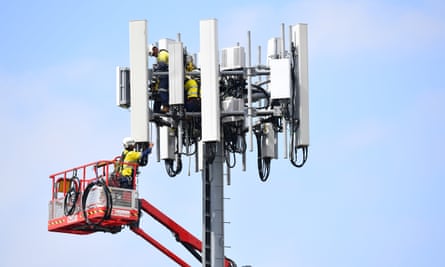If you've ever walked through a city and spotted tiny mini 5G cell towers on street light poles. They look like little boxes however, they're actually transmitting wireless signals from cellular providers to your mobile.
These smaller towers are replacing larger built cell towers. While they're less noticeable, they still can cause problems for people.
safe distance to live from cell phone tower of the FCC's Radiation Exposure Thresholds
The FCC's Radiation Exposure Thresholds determine the maximum amount of time an individual can be exposed to electromagnetic energy generated by wireless devices. The limits for exposure are based upon scientific research that show that RF energy could cause harm to health.
The rate of absorption called the specific absorption rate (SAR) is a measure of the radiofrequency energy absorbed by tissue. It's usually 1.6 Watts per kilogram calculated over one Gram of tissue.
But, since 5g operates at higher frequencies and has the potential to increase the intensity of energy on the skin and other exposed body areas. This can lead to various potential harms, including exacerbated development of skin diseases like dermatitis, cataracts, and skin cancer.
Because of the potentially severe effects of 5g radiation, PSU has chosen to create a general power density limit of 4 mW/cm2 based on the average across 1 centimeter, but not exceeding 30 minutes for all 5G services running at 3000 GHz. This localized limit is in accordance with the maximum SAR that is spatially averaged at 1.6 W/kg, which is averaged over 1 grams of tissues at six GHz.
The FCC's Maximum Exposure Thresholds for Maximum Exposure

If you've ever used a mobile phone, then you're aware that a safe location from the tower is around 400 meters. This is due to the power of transmission from a cell tower increases dramatically the further the tower is.
While it sounds like something that's good however, people who live close to towers may actually be more susceptible to health issues. For instance, a 2014 study in India discovered that people who lived within 50 meters of cell towers had significant more health issues than those who were away from the antennas.
This study found that people who moved into areas farther away from cell towers experienced their symptoms improve within a few days. safe distance from cell tower have also demonstrated that exposure to extreme amounts of electromagnetic field radiofrequency (EMFs) can lead to brain tumors, cancers, and other health problems.
This is due to the fact that RF radiation, which is used for wireless communication, has the ability to penetrate the body's outer layer, which is the skin. This is important to understand since the skin serves as a barrier to protect against mechanical injury, infection by pathogenic microorganisms, and the entry of harmful substances. The skin is the biggest organ in the human body, and is accountable for maintaining the integrity of other organs.
The FCC's Minimum Exposure Thresholds
The FCC's Minimum Exposition Thresholds depend on several assumptions that are not supported by scientific research. This includes the false assumption that exposures of a short duration to RF radiation are safe due to minimal absorption into body (i.e., tissue heating).
The assumption also ignores the deeper penetration of the ELF parts of modulated RF signals, as well as the effect of brief bursts of heat caused by RF pulses. These assumptions do not correspond with current knowledge of the biological effects of RF radiation. Therefore they should not be used for health protective exposure guidelines.
Additionally, what is a safe distance from a 5g cell tower and FCC limit their exposure limits to local peak SARs, based on the maximum speed of spatial absorption (psSAR) that is not a reliable dosimetric instrument for determining the level of exposure to RF radiation. Particularly the psSAR tool is not accurate when frequencies exceed 6 GHz. In addition, psSAR is not been tested for RF radiation exposed to other agents of the environment such like sunlight. The interactions of RF radiation and other environmental agents could produce synergistic or antagonistic results. This can lead to an increased risk of negative health adverse effects. For instance, exposure to RF radiation along with exposure to sunlight can cause an increase in the incidence of skin cancer and exacerbate other skin conditions like acne.
